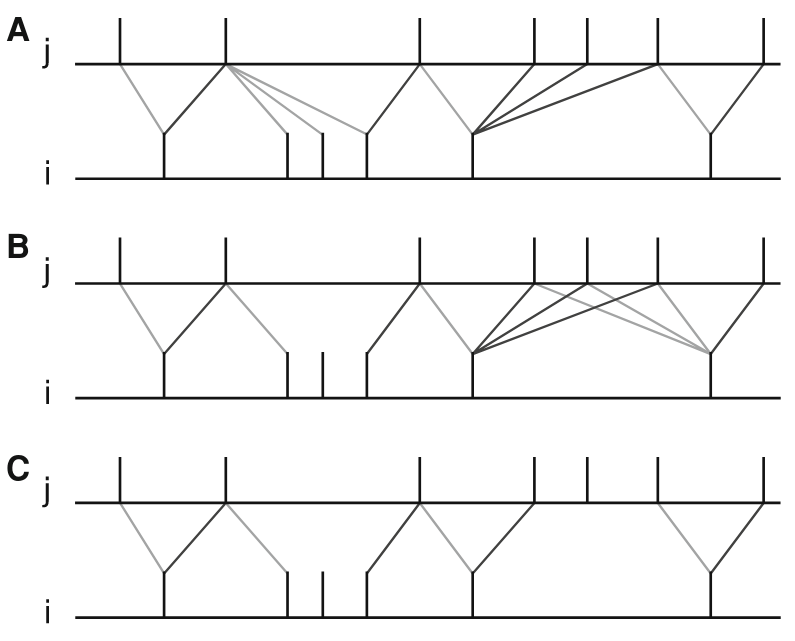stdp_nn_symm
Synapse type for spike-timing dependent plasticity with symmetric nearest-neighbour spike pairing scheme
Description
stdp_nn_symm_synapse is a connector to create synapses with spike time dependent plasticity with the symmetric nearest-neighbour spike pairing scheme [1].
When a presynaptic spike occurs, it is taken into account in the depression part of the STDP weight change rule with the nearest preceding postsynaptic one, and when a postsynaptic spike occurs, it is accounted in the facilitation rule with the nearest preceding presynaptic one (instead of pairing with all spikes, like in stdp_synapse). For a clear illustration of this scheme see fig. 7A in [2].
The pairs exactly coinciding (so that presynaptic_spike == postsynaptic_spike + dendritic_delay), leading to zero delta_t, are discarded. In this case the concerned pre/postsynaptic spike is paired with the second latest preceding post/presynaptic one (for example, pre=={10 ms; 20 ms} and post=={20 ms} will result in a potentiation pair 20-to-10).
The implementation involves two additional variables - presynaptic and postsynaptic traces [2]. The presynaptic trace decays exponentially over time with the time constant tau_plus and increases to 1 on a pre-spike occurrence. The postsynaptic trace (implemented on the postsynaptic neuron side) decays with the time constant tau_minus and increases to 1 on a post-spike occurrence.

Figure 7 from Morrison, Diesmann and Gerstner
Original caption:
Phenomenological models of synaptic plasticity based on spike timing”, Biological Cybernetics 98 (2008). “Examples of nearest neighbor spike pairing schemes for a pre-synaptic neuron j and a postsynaptic neuron i. In each case, the dark gray indicate which pairings contribute toward depression of a synapse, and light gray indicate which pairings contribute toward potentiation. (a) Symmetric interpretation: each presynaptic spike is paired with the last postsynaptic spike, and each postsynaptic spike is paired with the last presynaptic spike (Morrison et al. 2007). (b) Presynaptic centered interpretation: each presynaptic spike is paired with the last postsynaptic spike and the next postsynaptic spike (Izhikevich and Desai 2003; Burkitt et al. 2004: Model II). (c) Reduced symmetric interpretation: as in (b) but only for immediate pairings (Burkitt et al. 2004: Model IV, also implemented in hardware by Schemmel et al. 2006)
References
Parameters
Name |
Physical unit |
Default value |
Description |
|---|---|---|---|
d |
ms |
1ms |
Synaptic transmission delay |
lambda |
real |
0.01 |
|
tau_tr_pre |
ms |
20ms |
|
tau_tr_post |
ms |
20ms |
|
alpha |
real |
1.0 |
|
mu_plus |
real |
1.0 |
|
mu_minus |
real |
1.0 |
|
Wmax |
real |
100.0 |
|
Wmin |
real |
0.0 |
State variables
Name |
Physical unit |
Default value |
Description |
|---|---|---|---|
w |
real |
1.0 |
Synaptic weight |
pre_trace |
real |
0.0 |
|
post_trace |
real |
0.0 |
Source code
The model source code can be found in the NESTML models repository here: stdp_nn_symm.